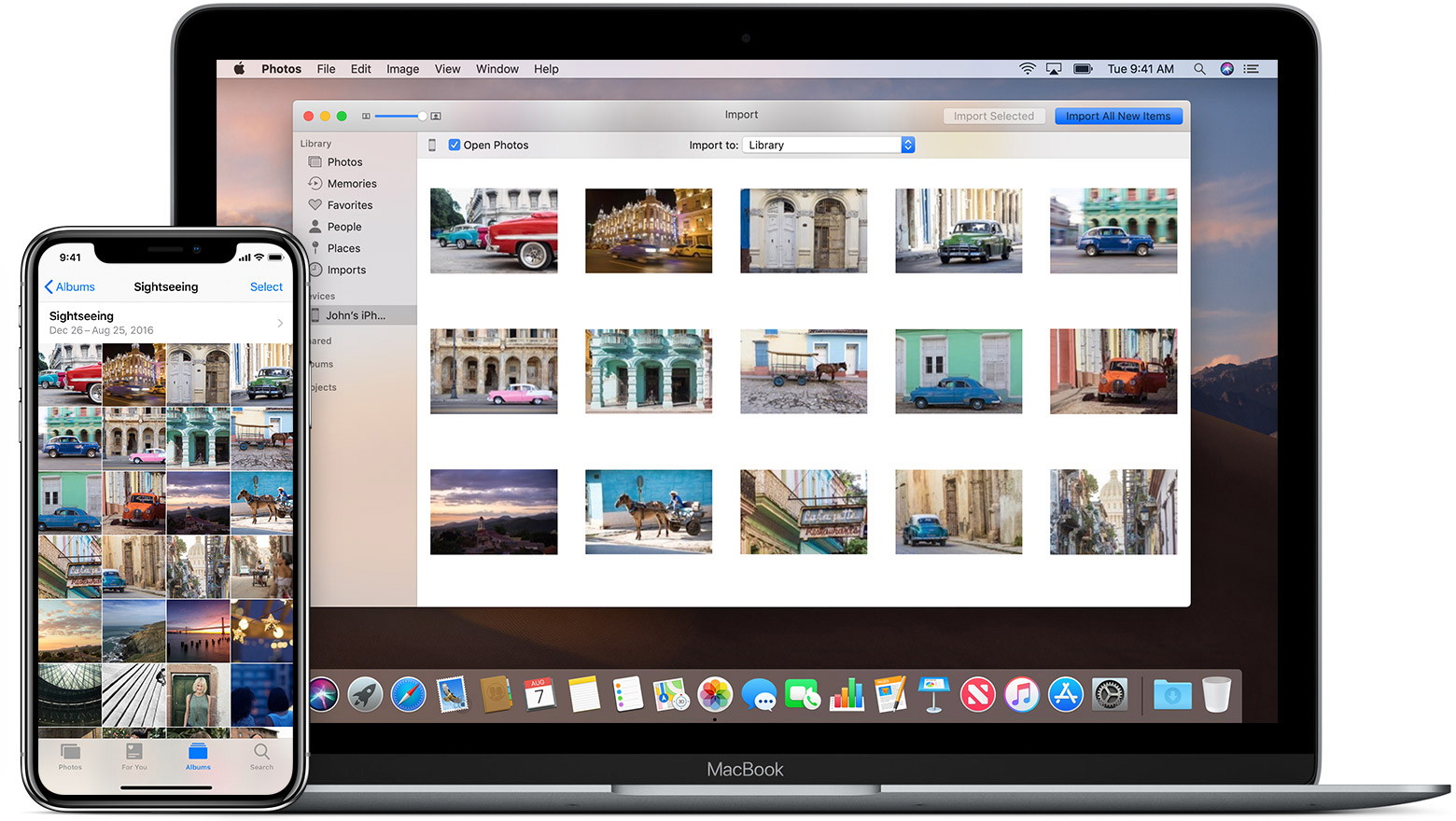iCloud Drive is a secure place to access all of your photos, videos and documents from Mac, Windows PC and iOS device. It allows you to store any type of file in your account. There is no restriction on file type, so you can keep all of your photos, videos, projects, presentations and more across all of your devices. To do so, you need to enable iCloud on all your devices.
Jun 08, 2015 How to import your iPhoto Library into Photos app for OS X mac. How to Move an iPhoto Library into Photos for Mac. How To Migrate Your Data from An OLD Mac to A NEW Mac. Nov 03, 2011 I'm trying to move my IPhoto Library from my old mac to my new powerbook. Both machines use version 9.2.1. Having copied the Iphoto Library to the picture folder on the new comp, I get a greyed-out folder and none of the photos show in my new Iphoto, although the album names exist. Oddly enough the slideshows are fully functional.
Here are the steps to Transfer Photos and Videos from iPhoto to iCloud Drive on Mac:
- Open 'iPhoto' on your Mac.
- Select photos and videos which you want to transfer.
- Click 'File' tab.
- Select 'Export' option.
- A 'Export' window opens up.
- Select the file type in Kind, File Name, Subfolder Format and more.
- Click 'Export' button.
- Choose 'iCloud Drive' folder.
- This way you can transfer photos and videos from iPhoto to iCloud Drive on Mac.
Photos are precious memories and all of us never want to ever lose them to hard disk crashes or missing drives. PicBackMan is the easiest and simplest way to keep your photos safely backed up in one or more online accounts. Simply download PicBackMan (it's free!), register your account, connect to your online store and tell PicBackMan where your photos are - PicBackMan does the rest, automatically. It bulk uploads all photos and keeps looking for new ones and uploads those too. You don't have to ever touch it.
A few months ago when OS X Yosemite was first shown to the public, Apple demonstrated its new Photos app. This app is meant to simplify photo management for all Mac users by emulating the looks and functions provided by the Photos app on both the iPhone and the iPad. This simplification comes at a cost though: when it finally releases its Photos app, it will replace iPhoto, its legendary photo management app that has been on every Mac by default for years.
This move will definitely be hard on a lot of users, especially those who, like me, got used to working with iPhoto for so many years.
Even worse: for most of us, our photo albums hold a huge number of dear memories, and as with every update, there is always the possibility of something going wrong when the time comes to migrate to the new Photos app.
With that considered, here are a couple of short guides on how to back up your iPhoto library both the simple way and the not-so-simple way.
Back Up Your iPhoto Library: The Easy Way
First, the good news (or bad depending on how you see it). In a very Apple way, in order to keep things simple and integrated on OS X, Apple consolidates your photos into a single, giant file that represents your photo library. But this file is not composed of just your photos, it also holds very important meta-data, like your events, photo stream shots and such.
To find your iPhoto library, open any Finder window and click on the Pictures folder. There you should find it.
To back it up manually and without complications, all you have to do is copy the entire file to any destination you want. It can be a USB flash drive or a portable backup disk if you want and that’s it.
Cool Tip: If you want to transfer your iPhoto Library to another Mac just plug your drive to it and copy your iPhoto library backup to the target Mac’s Pictures folderBack Up Your iPhoto Library: The Less-Easy Way

If you want more control over what to back up from your library, there’s a way to do it that requires some digging around but that is perfect for that purpose.
For this, you have to head to the same iPhoto Library file within your Pictures folder, except this time instead of copying it, right-click on it and then select the Show Package Contents option.
Then, head to the Masters folders. There you will see several folders categorizing the different years your photos belong to.
When you open each of them, you will find folders for the different events, albums and dates that contain the photos as you organized them in iPhoto. There you will be able to select exactly what you want to back up and the way that you want to back it up.
And there you have it. Now you will always be in control of your photo library and most importantly, you will have peace of mind in case things don’t go that well with the new Photos app. Enjoy!
 Also See#backup #iphoto
Also See#backup #iphoto Did You Know
Old Mac Computer
It's estimated that people share more than 700 billion photos per year on Facebook.